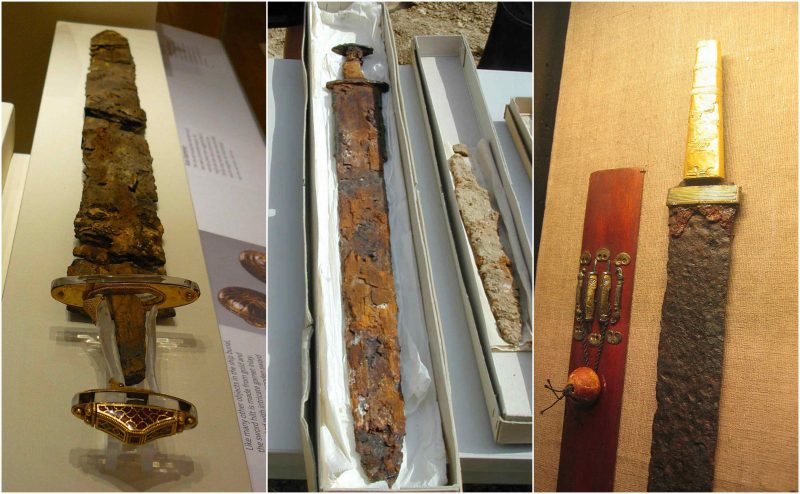The spatha was introduced to the Roman army in the early imperial period by Celtic cavalry auxiliaries who continued to wear their Celtic long swords, with blade lengths of 60 to 85 cm, in Roman service.
The earlier gladius sword was gradually replaced by the spatha from the late 2nd to the 3rd century.From the early 3rd century, legionaries and cavalrymen began to wear their swords on the left side, perhaps because the scutum had been abandoned and the spatha had replaced the gladius.
In the imperial period, the Romans adopted the original Greek term, spáthē (σπάθη), as spatha, which still carried the general meaning of any object considered long and flat.
The word Spatha appears first in Pliny and then Seneca with different meanings: a spatula, a metal-working implement, a palm-leaf and so on.
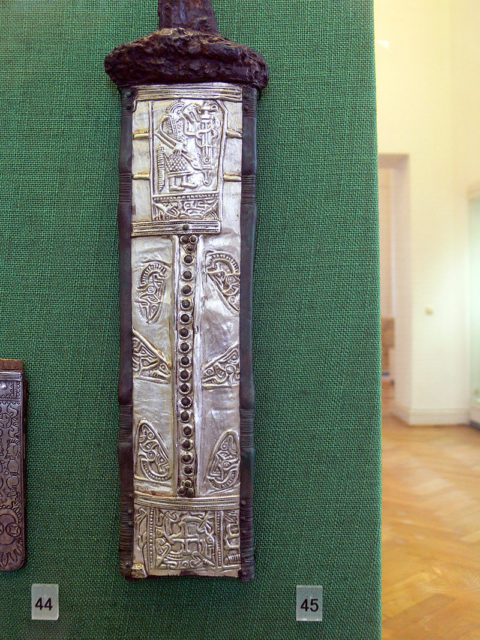
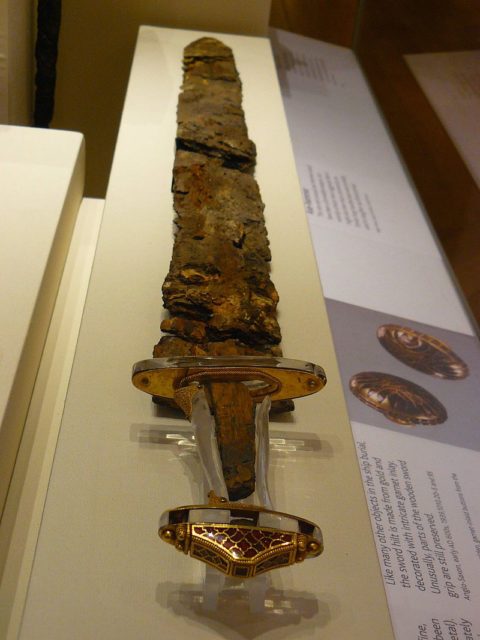
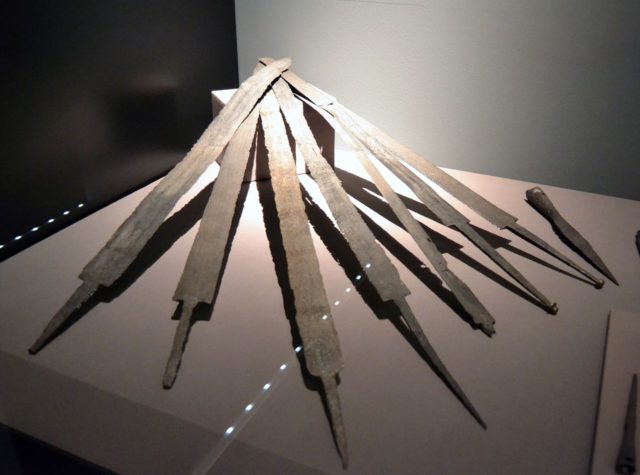
Referring to an actual sword, the term first appears in the pages of Tacitus with reference to an incident of the early Empire.
The British king Caractacus, having rebelled, found himself trapped on a rocky hill, so that if he turned one way he encountered the gladii of the legionaries, and if the other, the spathae of the auxiliaries.
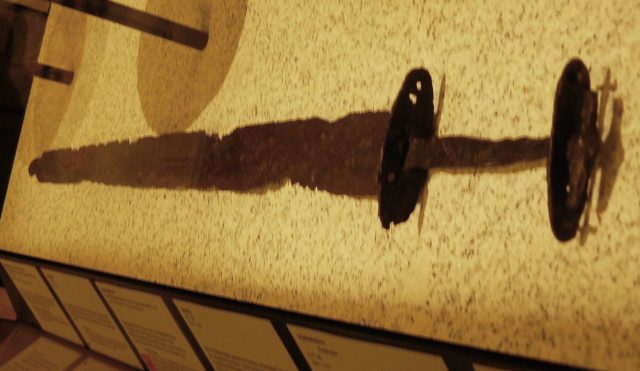
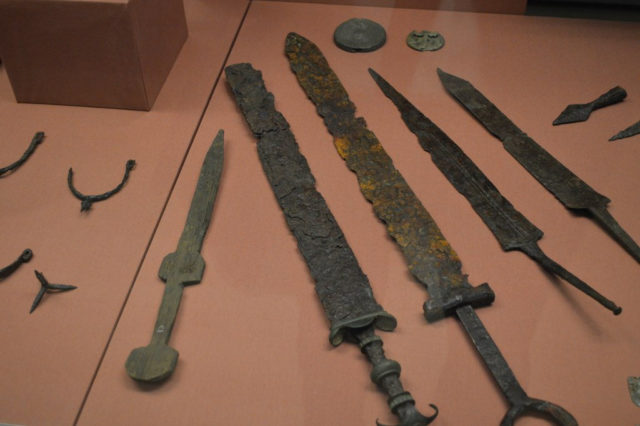
Tacitus does not identify the auxiliaries, and since the Romans employed both transplanted soldiers and local levies, it impossible to know the origins of the Roman auxiliaries in Tacitus’ account. Most examples of spathae come from Germany and Eastern Europe, however.
There is an excellent chance that the owners of the spathae were Germanic. There is no indication in Tacitus either that they were cavalry; overall, the Romans used both cavalry and infantry.
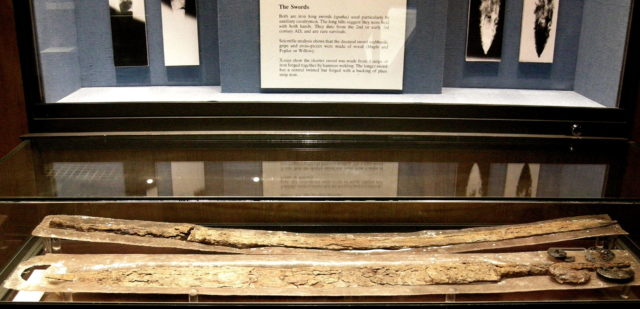
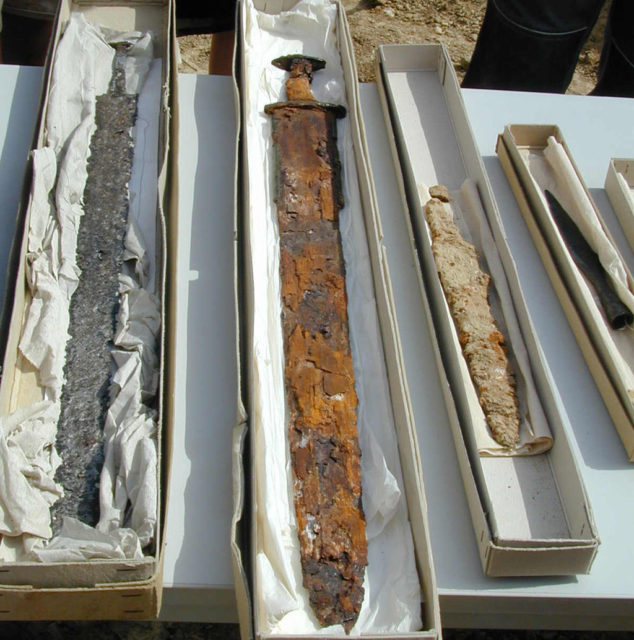
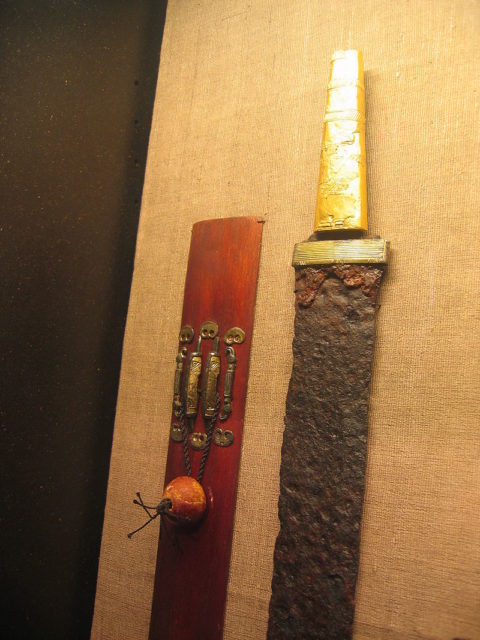
When the spathae next appeared, after a mysterious period of about two centuries which passed without their mention, they became the standard weapon of heavy infantry.
The Romans could have borrowed this weapon from the auxiliaries, probably Germanic mercenaries, but the name does not support this origin. Spatha was certainly not a Germanic name, nor is there any indication anywhere what its Germanic name was.
There are a plenitude of Germanic names, such as Old English sweord, bill, and so on, but no evidence to tie any name to the spatha, which was never used in Germanic languages as the name of a sword.
The spatha remained in use in the Byzantine Empire and its army. In the Byzantine court, spatharios (σπαθάριος), or “bearer of the spatha“, was a mid-level court title.
Other variants deriving from it were protospatharios, spatharokandidatos and spatharokoubikoularios, the latter reserved for eunuchs. One of the more famous spatharokandidatoi was Harald Hardrada
